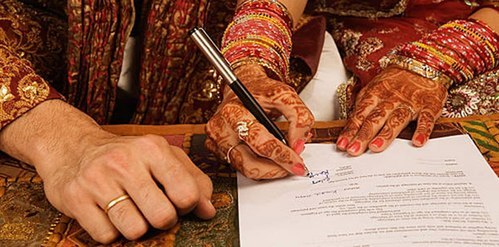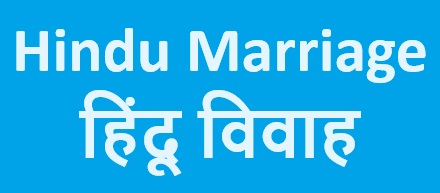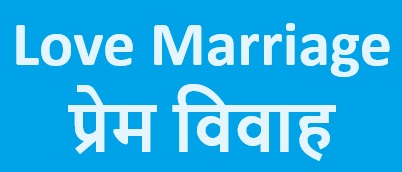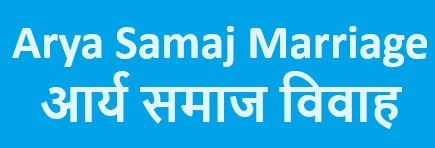Arya Samaj Mandir Marriage Certificate in Delhi
The Arya Samaj Weddings are very different compared to the other forms of weddings. They have simple marriage procedures and high spiritual quotient with no expense like other marriages. This community which was initially founded by Swami Dayanand Saraswati sincerely believed Hinduism to be the ‘original’ religion and that conversions accounted for the spread of other religions from Hinduism, and has hence demolished caste system and dowry system for this community.
1. Madhuparkaa
To symbolize a happy and prosperous married life, the first Arya Samaj Wedding ritual to take place at the arrival of the bride and groom is the enchantment of the holy Vedic hymns and its explanation by Pandit Ji. Then comes the garland exchange ritual, where, the bride garlands the groom first. ‘Madhuparka’ is a mixture of honey, curds, and cream. The bride gives the groom water three times, which he then sprinkles on his feet, over his body, and drinks it the third time. Similarly, the groom then repeats the same ritual three times, and then after offering the mixture to the almighty God, the groom eats the Prasadam.
2. Yogna and Kanyadaan
In this Arya Samaj Wedding ritual, Yagna begins with the groom wearing a sacred thread. Then Kanyadaan is the ritual of the father of the bride placing his daughter’s hand in the hands of the groom. This ritual symbolizes that the father henceforth hands the responsibilities of his daughter to her husband.
3. Havan
In Arya Samaj Weddings, as they do not believe in idol worship, the fire burning at the center of the mandap, serves as the holy witness. The pujari or gurukul, brings along the elements that are needed for performing the wedding rites.
4. Pani Grahan Sanskar
The ritual includes the bride and groom holding hands together and chanting mantras promising to love and care for each other and their needs, throughout their lives. After this, the bride and the groom together, take one ‘parikrama’ around the holy fire.
5. Shilarohan
In this Arya Samaj Wedding ritual, the brides mother other places the brides right foot on a stone while the groom chants mantras given by the pandit. The symbolism of this ritual specifies a strong and solid relation between the bride and the groom. This ritual also represents a prayer made by the couple to strengthen their relation.
6. Lajahom
The ritual that follows Shilarohan is Lajahom. This ritual consists of offering Murmura or puffed rice into the agni. The bride and groom place their hand in hands and then it is offered into the holy fire. The area samaj mandir marriage process is a traditional marriage process.
7. Phere or Parikrama
After performing all the above rituals the bride and groom now have to take 4 rounds around the agni. The bride’s sari and groom’s‘ angavastra’ is tied in three knots and the phere are witnessed by the holy fire.
8. Saptapadi and Hriday Sparsh Mantra
After the phere, seven steps or ‘Saptapadi’ are taken by the couple followed by one circle around the fire. Here, the couple walk along side, hand in hand. The bride and groom also perform the Hriday Sparsh mantra ritual. Here the couple touch each other’s hearts and promise to be loyal to each other.
9. Sindoor and Mangalsutra
In the final ritual, the groom applies sindoor on the brides forehead and ties a mangalsutra. They feed each other sweets and promise to henceforth care and cherish each other. The arya samaj wedding ends with the couple where the newly-weds view the Dhruv or the Pole Star and then take blessings from the elders.










